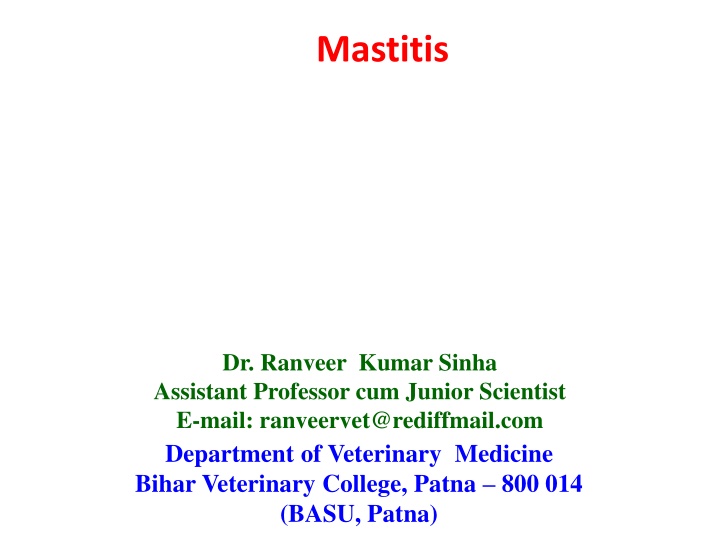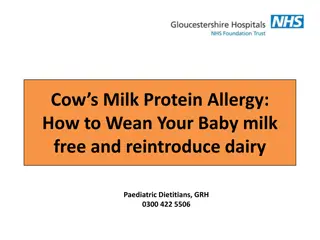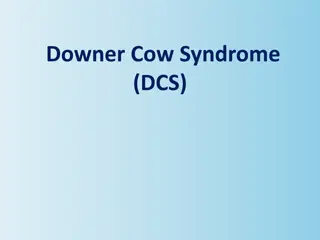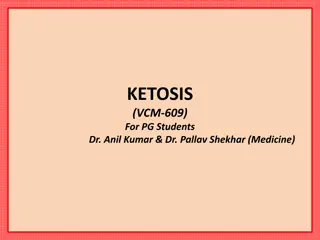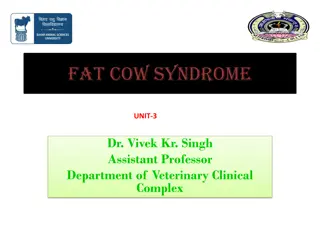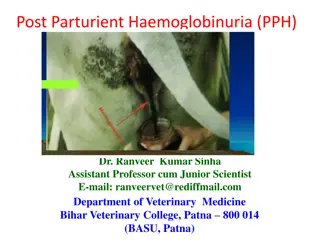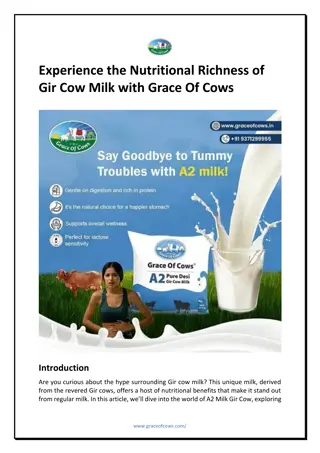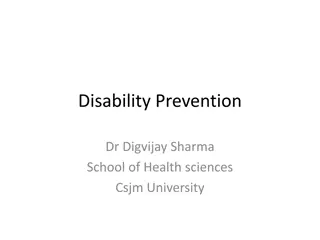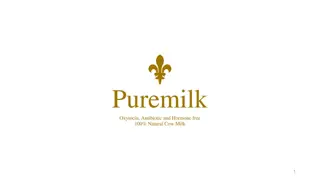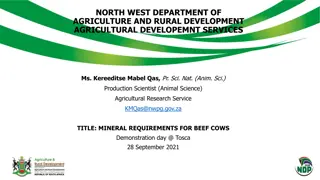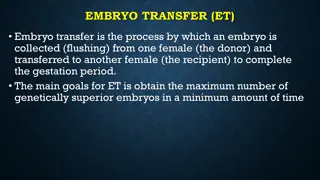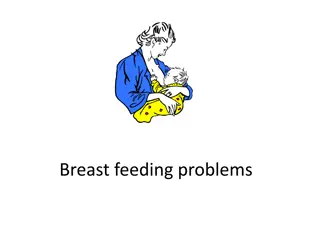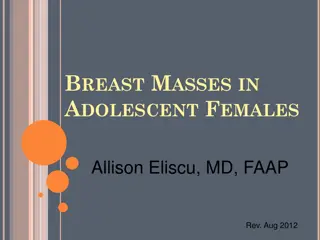Mastitis in Cows: Causes, Treatment, and Prevention Strategies
Mastitis is a common and costly disease affecting dairy cows, caused primarily by bacterial infections. Symptoms in cows include decreased milk production, changes in milk quality, and potential death if left untreated. Dr. Ranveer Kumar Sinha shares insights on the etiology, treatment options such as antibiotics and proper milking practices, and control measures like udder preparation, equipment hygiene, and monitoring mastitis scores to prevent and manage this condition effectively.
Download Presentation

Please find below an Image/Link to download the presentation.
The content on the website is provided AS IS for your information and personal use only. It may not be sold, licensed, or shared on other websites without obtaining consent from the author.If you encounter any issues during the download, it is possible that the publisher has removed the file from their server.
You are allowed to download the files provided on this website for personal or commercial use, subject to the condition that they are used lawfully. All files are the property of their respective owners.
The content on the website is provided AS IS for your information and personal use only. It may not be sold, licensed, or shared on other websites without obtaining consent from the author.
E N D
Presentation Transcript
Mastitis Dr. Ranveer Kumar Sinha Assistant Professor cum Junior Scientist E-mail: ranveervet@rediffmail.com Department of Veterinary Medicine Bihar Veterinary College, Patna 800 014 (BASU, Patna)
Health Concerns Animal health Loss of functional quarter Lowered milk production Death of cow Human health Poor quality milk Antibiotic residues in milk
Etiology Bacteria ( ~ 70%) Yeasts and molds ( ~ 2%) Unknown ( ~ 28%) physical trauma & weather extremes BACTERIA Streptococci:- S. Uberis, S. Dysgalactiae, S. agalactiae Staphylococci :- Staph. aureus (Summer mastitis) Spread by milking equipment and milker s hands Coliforms :- E. coli, Klebsiella, Environmental source (manure, bedding, floors and cows) Coliforms cause acute clinical mastitis - high temp, and inflamed quarter, watery milk with clots and pus, toxemia Other organisms:- Pseudomonas aeruginosa Corynebacterium pyogenes Fungi:- Candida,Mycoplasma bovis
Treatment Antibiotic:- Parental & Intramammary Strip quarter frequently Oxytocin inj Corticosteroid NSAID Topical anti-inflammatory Other symptomatic treatment Discard milk from treated cows
CONTROL ONE: Prepare cows properly for milking Udder preparation is pre-dipping.Pre-dips lower the risk of new infections by 70% Chlorhexidine 0.2% Use single service paper towels, dry teats before machine-application. TWO: Milking equipment should be functioning properly and regularly cleaned and maintained Attach teat cups after thorough cleaning and drying of teats Provide stable vacuum Check for slipping of teat cup
CONTROL THREE: Apply and remove machine carefully Remove machine when cow is milked out shut off vacuum before removal. FOUR: Dip each teat after each milking using a germicidal teat dip. Post-dips seal the teat ends temporarily for 6 to 8 hours FIVE: Monitor your mastitis score Take action when significant increases occur.
CONTROL SIX: Treat clinical cows, treat aseptically. Withhold treated cows' milk from milk supply. SEVEN: Segregate chronic mastitis cows, milk them last, cull when necessary. cows with chronic mastitis serve as reservoirs of organisms and could infect susceptible cows EIGHT: Dry each quarter using partial insertion techniques with an approved dry cow treatment at drying off. Lowers the risk of clinical and subclinical mastitis during subsequent lactation NINE: Keep cows clean, udders free from soil and manure. Fence off wet, swampy areas. Keep calving areas clean, properly bedded (straw preferred). TEN: Properly feed and care for cows.
